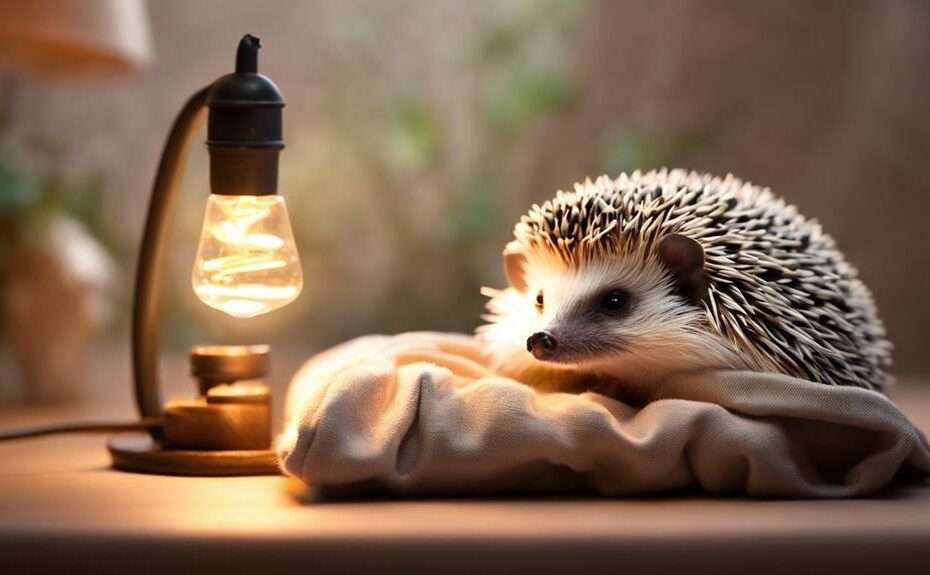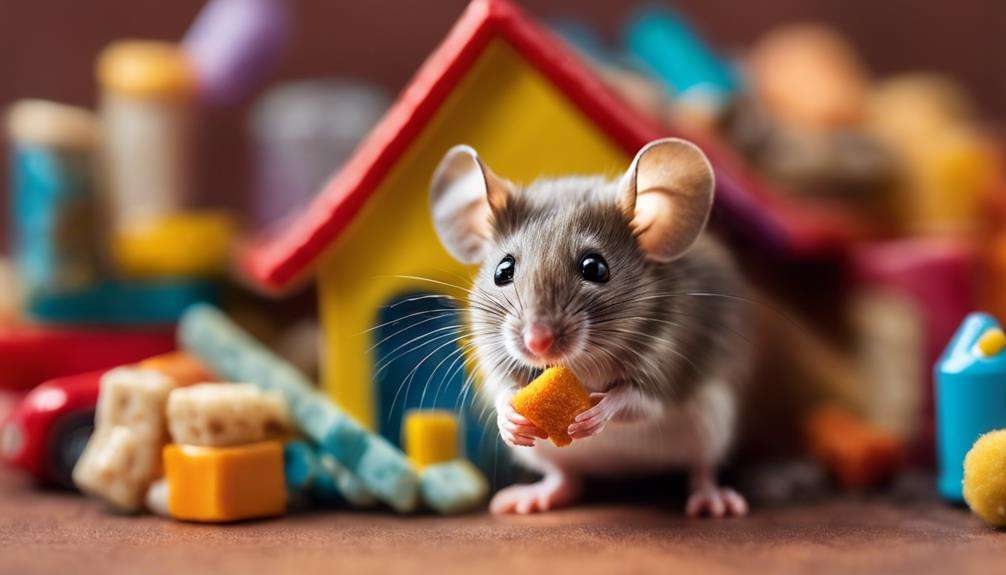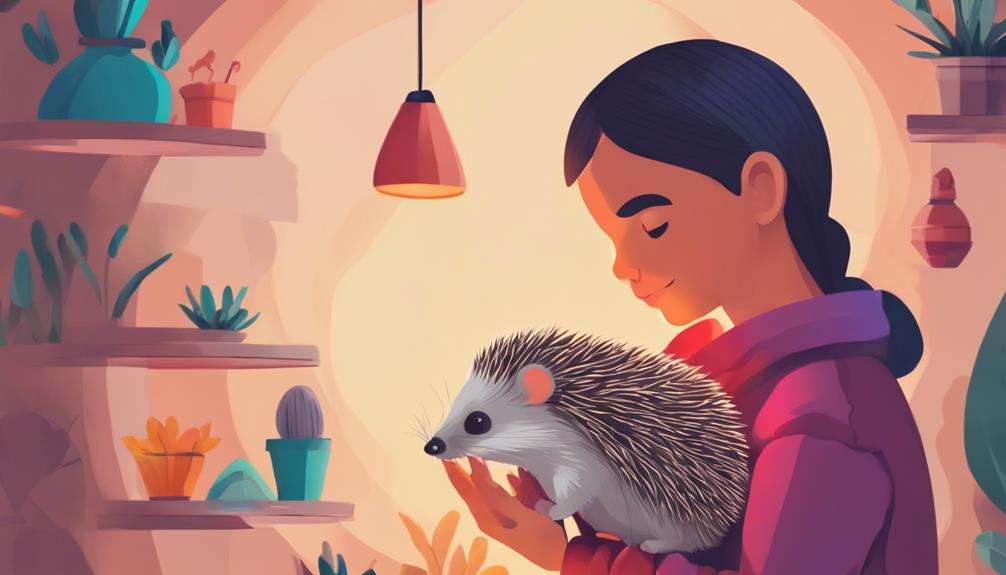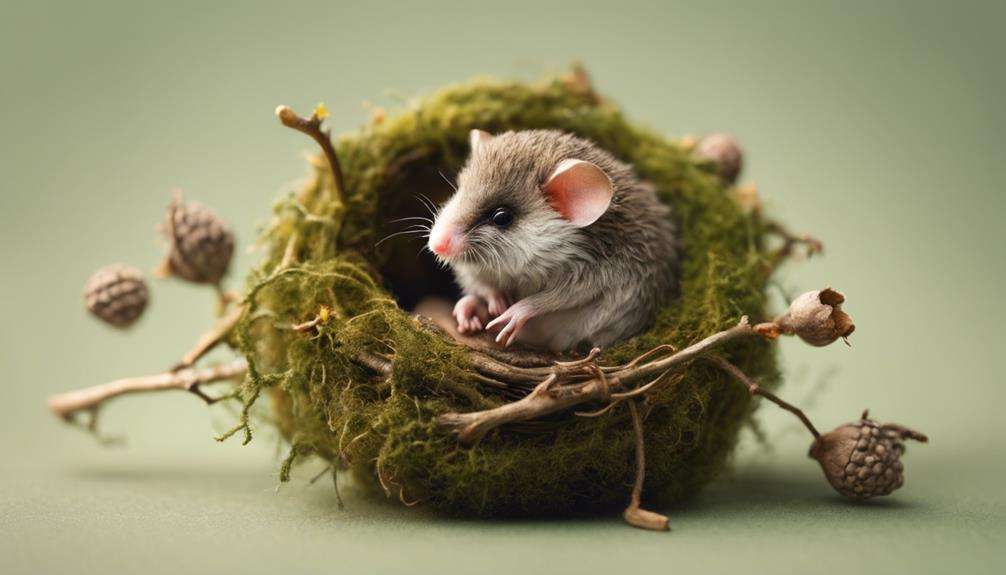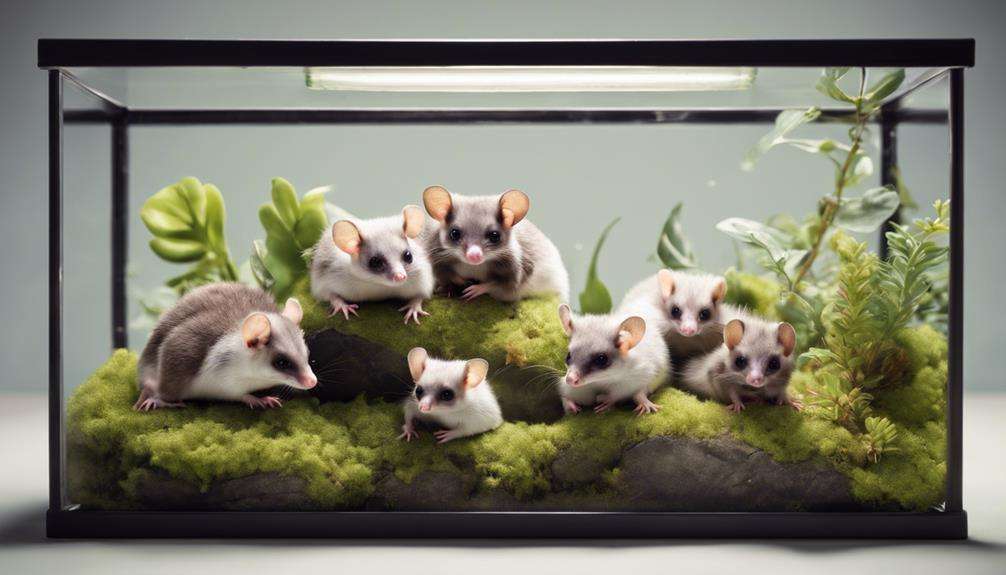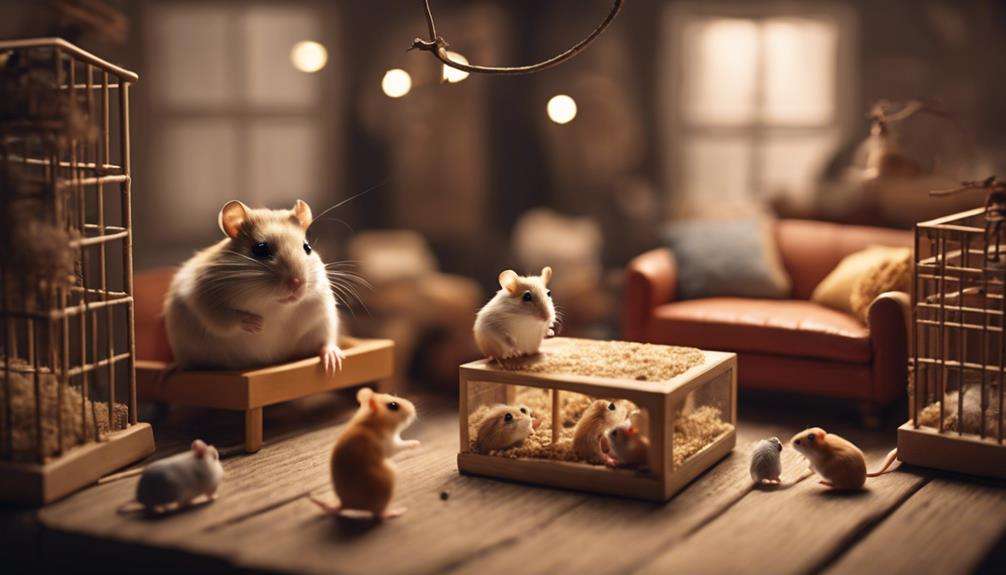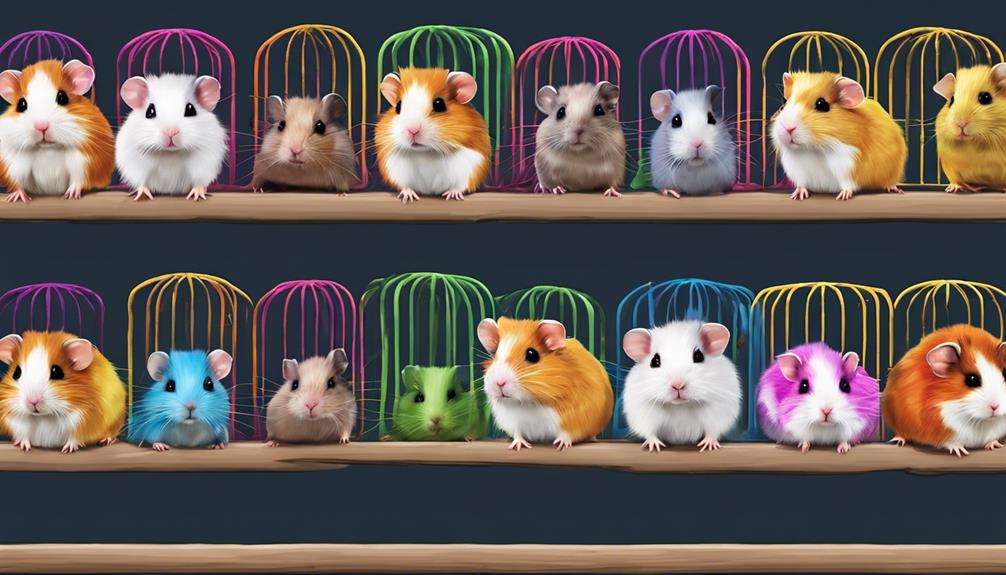If you're considering unique companionship, rare small animals like the prehensile-tailed porcupine, agouti, and spotted genet could pique your interest. These creatures offer a distinctive pet-owning experience due to their unusual traits and care requirements.
However, there are even more lesser-known small animals with endearing qualities and enchanting behaviors that could surprise you. Each of them brings a distinct charm to the world of pet ownership, making them worth exploring for those looking to broaden their pet horizons.
Key Takeaways
- Arboreal small animals like Prehensile-Tailed Porcupines and Binturongs need spacious, tall enclosures for their tree-dwelling habits.
- Animals with unique diets such as Agoutis and Raccoon Dogs require specific nutrition for optimal health and well-being.
- Exotic pets like Spotted Genets and Dik Diks boast striking appearances and traits, adding uniqueness to a pet collection.
- Animals like Hyraxes and Tayras have specific habitat and space needs that must be met to ensure their health and happiness.
Prehensile-Tailed Porcupine
The Prehensile-Tailed Porcupine, a tree-dwelling rodent native to Central and South America, is distinct among exotic pets for its large size and unique odor. These small exotic creatures have a specialized appeal but require careful consideration before becoming a part of your home. As an exotic pet owner, you must provide a spacious and tall enclosure to accommodate the Prehensile-Tailed Porcupine's arboreal lifestyle. Due to their specific needs, these porcupines may not be suitable for everyone, making them rare additions to the world of exotic pet ownership.
Caring for a Prehensile-Tailed Porcupine involves understanding their climbing behavior and ensuring they have enough space to exercise this natural instinct. Their distinct odor, though a part of their charm for some enthusiasts, may be a consideration for those sensitive to smells. While these creatures may not be as popular as some other exotic pets, for the right owner willing to meet their requirements, the Prehensile-Tailed Porcupine can be a fascinating and rewarding companion.
Agouti
Agoutis require a specific diet rich in fruits, nuts, and vegetables to thrive in captivity. Understanding the behavior of agoutis, such as their social nature and monogamous tendencies, is vital for providing them with a suitable environment.
Care tips, diet recommendations, and behavior insights are essential aspects to take into account when contemplating an agouti as a pet.
Agouti Care Tips
Implementing a balanced diet is important for maintaining the health of your pet agouti. These exotic animals, sometimes kept as pets, are herbivores with specific dietary needs. Make sure your agouti's diet consists mainly of vegetables, fruits, and high-quality hay to meet their nutritional requirements. Fresh water should always be available. Additionally, consider providing vitamin and mineral supplements to support their well-being.
Agoutis are social creatures that require ample space to roam and explore. Create an enriched environment with hiding spots, tunnels, and toys to keep them mentally stimulated. Regular veterinary check-ups are essential to monitor your pet agouti's health and address any concerns promptly. By following these care tips, you can ensure a happy and healthy life for your unique companion.
Agouti Behavior Insights
Maintaining a balanced diet is crucial for understanding the natural behavior of agoutis. These exotic animals that require specific care are known for their monogamous nature in the wild, often forming lifelong bonds with their mates. As pets, agoutis may exhibit similar behavior, showing affection and loyalty towards their owners.
Their diurnal activity makes them fascinating companions during the day, as they're most active then. Agoutis, with their herbivorous diet, need ample space to roam and explore, mimicking their natural habitat. Providing enrichment activities like foraging opportunities can help satisfy their instinctual behaviors.
Understanding and catering to the unique behavior of agoutis is essential for their well-being as pets.
Agouti Diet Recommendations
Ensuring peak health and nutrition for your pet agouti involves providing a well-balanced diet rich in fiber, fresh fruits, vegetables, and hay. As herbivores, agoutis thrive on a diet that mimics their natural food sources of fruits, nuts, seeds, and vegetation. A balanced diet is essential for their digestive health and overall well-being.
High-fiber foods like hay help maintain proper gut function and prevent obesity in agoutis. It's critical to steer clear of high-sugar foods and processed treats that can lead to dental problems and weight issues. To guarantee your pet agouti receives the best nutrition, consult with a veterinarian knowledgeable in exotic pet care to develop a suitable diet plan tailored to their herbivorous needs.
Spotted Genet
Spotted Genets are fascinating creatures known for their agility and unique mix of traits reminiscent of ferrets, cats, and raccoons.
These animals require an enriched environment to keep them mentally stimulated and active.
Providing proper care and a spacious habitat is essential for the well-being of Spotted Genets.
Unique Characteristics
With its unique blend of features reminiscent of a ferret, cat, and raccoon, the Spotted Genet stands out as an independent and intriguing pet choice native to Africa.
These independent pets boast a striking appearance, with a slender body, elongated neck, and large ears that aid their excellent sense of hearing. Their coat is adorned with distinct spots or stripes, adding to their allure.
Spotted Genets are agile climbers, thanks to their sharp retractable claws, which help them navigate various terrains with ease. Their carnivorous diet consisting of small mammals and insects aligns with their predatory nature.
Owning a Spotted Genet requires dedication to providing ample space for exploration and mental stimulation due to their active and curious demeanor.
Care and Maintenance
To properly care for a Spotted Genet, providing a well-structured environment that encourages their natural behaviors and abilities is essential. These unusual pets require a habitat that allows for climbing structures, hiding spots, and opportunities for exploration.
As carnivores, their diet should consist of small mammals and insects to meet their nutritional needs adequately. Ensuring mental and physical stimulation is vital to prevent boredom and promote their well-being.
Owners of spotted genets should dedicate time to interact with them regularly and provide enrichment activities to mimic their natural hunting instincts. Due to their unique traits and requirements, consistent care and attention are necessary for spotted genets to thrive in a domestic setting.
Dik Dik
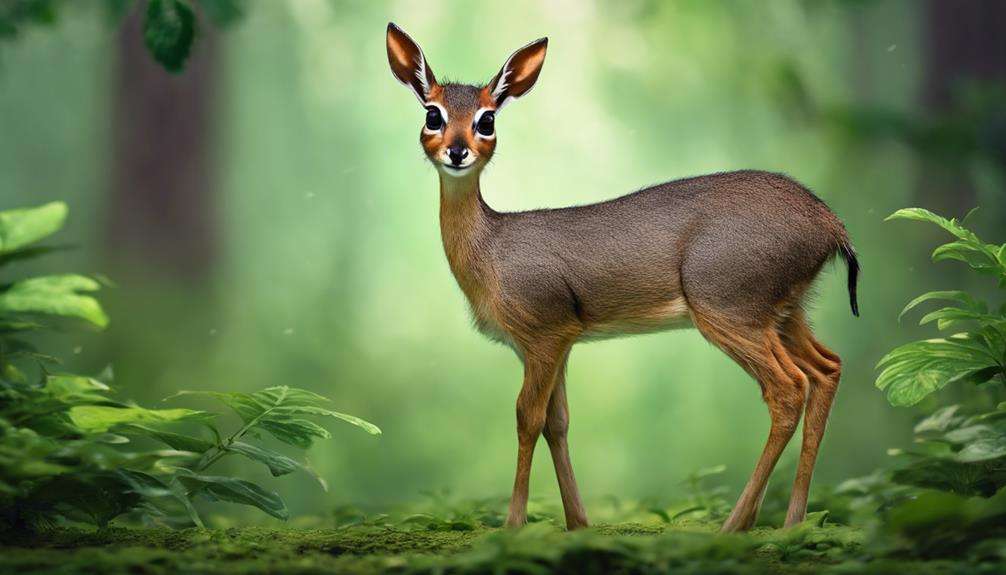
Native to Africa, Dik Diks are diminutive herbivorous antelopes highly valued in the exotic pet trade for their social behavior and amiable disposition. Once popular as pets, they're now less common in private ownership due to restrictions, but their unique appeal remains intact.
Dik Diks prefer living in groups, thriving on social interaction, which adds to their charm as pets. These small herbivores mainly feed on grasses and leaves, necessitating a diet rich in vegetation to maintain their health.
Despite their reduced presence in the exotic pet trade, Dik Diks continue to captivate enthusiasts interested in rare species. Their friendly nature and social tendencies make them rewarding companions for those willing to invest time and effort into caring for them.
While not as readily available as in the past, these antelopes offer a glimpse into the fascinating world of exotic pet ownership, appealing to individuals seeking a distinctive and engaging animal companion.
Binturong
Dik Diks, though less prevalent in the exotic pet trade today, share intriguing similarities with the binturong, also known as a bearcat. Binturongs, scientifically classified as viverrids, boast a bear-like appearance and are distinguished by a unique popcorn-like scent exuded from their scent glands. These arboreal creatures are adept climbers, spending a significant portion of their time in trees. Their prehensile tails aid in navigation and provide stability while moving through their forest habitats.
While not commonly kept as pets, binturongs can be fascinating companions for experienced exotic pet owners due to their gentle and inquisitive nature. Binturongs have specialized care requirements that cater to their arboreal lifestyle and unique characteristics. Their alluring demeanor and enthralling scent make them stand out among exotic pets, offering a truly distinctive ownership experience. For those willing to provide the necessary care and attention, these bearcat creatures can bring a sense of wonder and intrigue into the lives of their owners.
Raccoon Dog
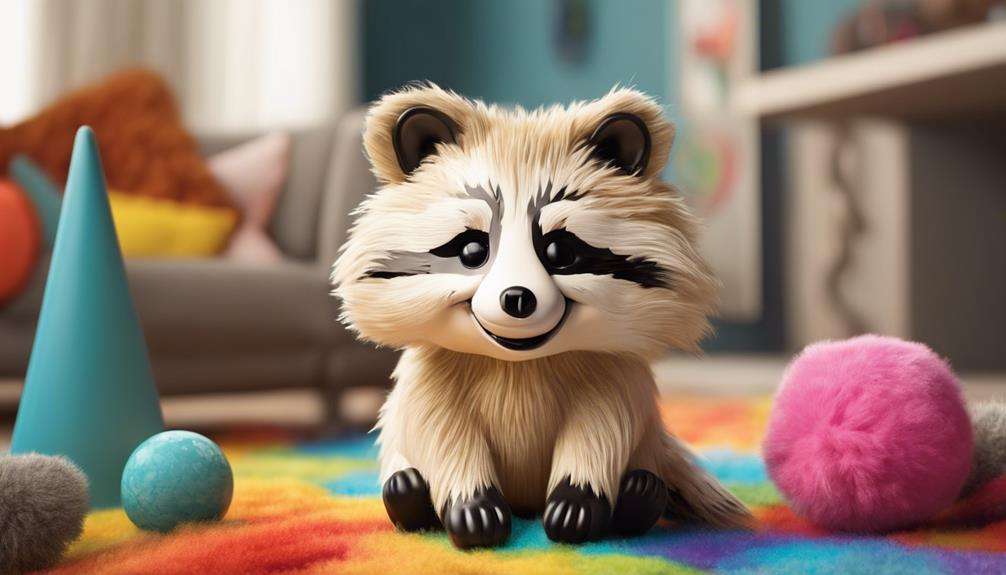
A remarkable member of the Canidae family, the raccoon dog, though often mistaken for its namesake, possesses distinct features that set it apart in the domain of small exotic animals. Also known as tanukis, these creatures are native to East Asia and sport a raccoon-like face with unique markings.
Raccoon dogs are omnivores, with a diet that includes fruits, insects, small mammals, and amphibians. Their playful and curious nature makes them charming companions for experienced owners.
Remarkably, raccoon dogs exhibit a hibernation-like state called 'winter lethargy,' where they reduce their activity during colder months to conserve energy. If considering a raccoon dog as a pet, it's crucial to provide them with a diverse diet and ample opportunities for mental stimulation and physical activity to guarantee their well-being.
Prevost Squirrel
Originating from Southeast Asia, the Prevost Squirrel, also known as the Asian tri-colored squirrel, boasts a distinctive fur pattern of black, white, and reddish-brown. These arboreal creatures are popular among exotic pet enthusiasts due to their unique appearance and active nature. Prevost Squirrels are omnivores with a varied diet that includes fruits, nuts, seeds, insects, and small vertebrates. In captivity, providing them with a diet that mimics their natural food sources is important for their health and well-being.
These squirrels require ample space and mental stimulation to thrive. Due to their agile nature, they enjoy climbing, jumping, and exploring their surroundings. Providing them with branches, platforms, and toys can help keep them mentally engaged and physically active. Interacting with these animals regularly can also help build a bond and prevent them from becoming bored or stressed.
If you're considering a Prevost Squirrel as a pet, make sure you have the time, resources, and dedication to meet their specific needs. With proper care and attention, these charming creatures can make delightful additions to the right household.
Hyrax
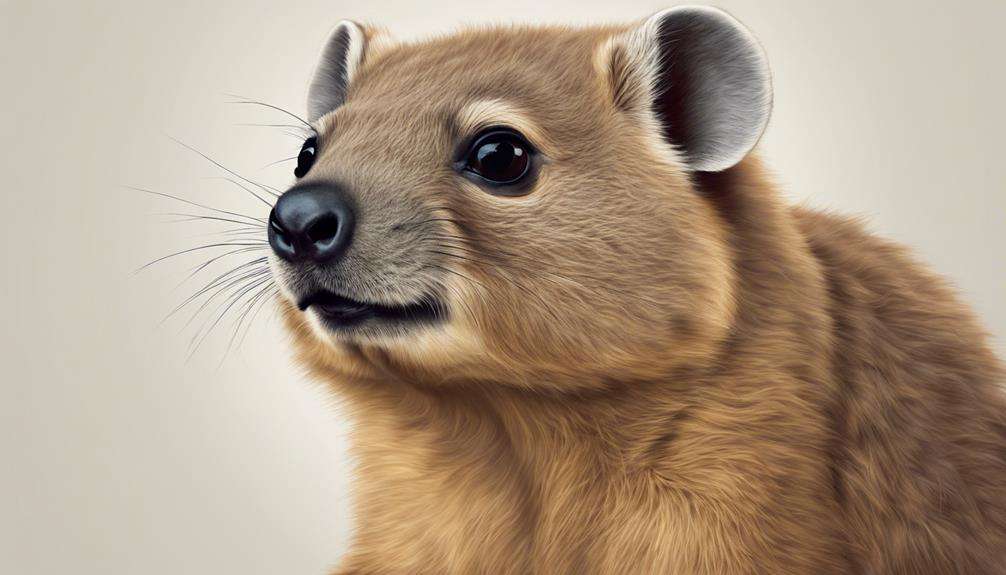
The Hyrax, a small herbivorous mammal native to Africa and the Middle East, shares surprising evolutionary connections with elephants and manatees. Despite their small size, these fascinating creatures have unique characteristics that make them stand out.
If you're considering the Hyrax as a pet, you should know that they're relatively easy to care for. Hyraxes require a habitat that mimics their natural environment, including rocks for climbing and grazing areas. They have specific dietary needs, primarily feeding on plant material like leaves, fruits, and bark.
When it comes to social interactions, Hyraxes are known for their complex vocalizations, which play a critical role in their communication within groups. These vocalizations can be high-pitched and heard over long distances.
Maintenance, keeping a Hyrax as a pet may require specialized knowledge due to their unique behaviors and dietary habits. However, for those willing to put in the effort, these small mammals can make charming and intriguing companions.
Tayra
Having explored the unique characteristics of the Hyrax, a small herbivorous mammal with surprising evolutionary connections, let's now shift our focus to the Tayra, a rare member of the weasel family found in Central and South America. Tayras, also known as tolomucos, exhibit distinctive features such as long, slender bodies and bushy tails, making them excellent climbers in their natural habitat. These small carnivores are highly intelligent and curious creatures, displaying a playful and energetic nature that sets them apart.
In Central and South America, where they're mainly found, tayras play a crucial role in the ecosystem by preying on small mammals, birds, fruits, and insects. Despite their charming characteristics, tayras aren't commonly kept as pets due to the challenges associated with meeting their specific care requirements and the legal restrictions imposed in certain regions. While their interesting behaviors may appeal to some exotic pet enthusiasts, potential owners must carefully consider the responsibilities and regulations involved in keeping a tayra in captivity.
Four-Eyed Opossum
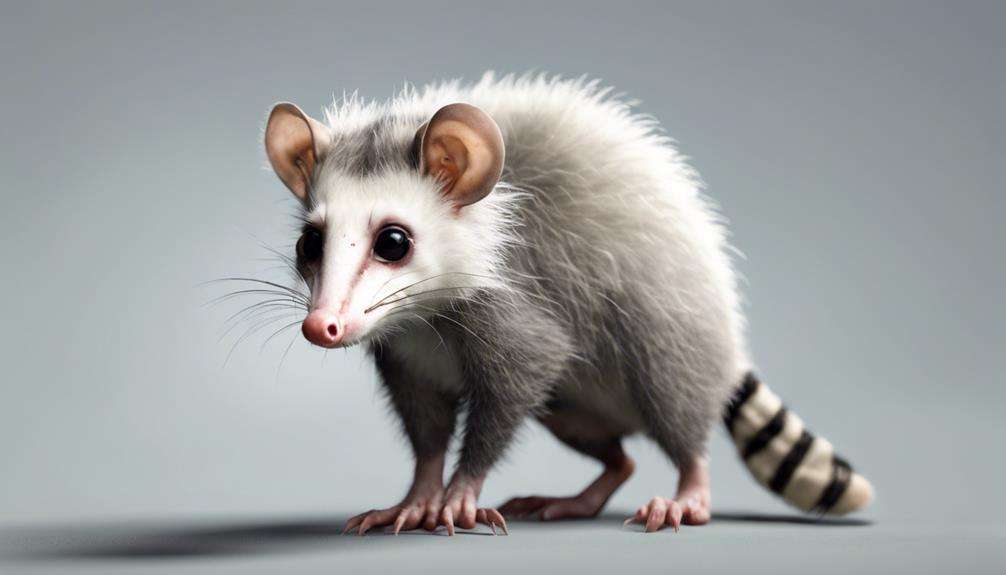
A distinctive feature of the Four-Eyed Opossum, a marsupial native to Central and South America, is the eye-like spots on its rump. Despite their name, these opossums don't possess four eyes; rather, the markings on their hindquarters mimic eyes, serving as a clever form of defense against predators.
These small, exotic pets measure around 10-14 inches in length, excluding their prehensile tails. Four-Eyed Opossums are solitary creatures, active during the night, and sustain themselves on a diet comprising fruits, insects, and small animals.
If considering a Four-Eyed Opossum as a pet, specialized care is important. Creating a spacious enclosure with ample opportunities for enrichment activities is essential for their well-being. Due to their nocturnal nature, offering hiding spots and activities that encourage natural behaviors is important.
Being exotic animals, these opossums require attention to detail in their care to ensure they thrive in captivity.
Frequently Asked Questions
What Is the Rarest Pet to Own?
The rarest pet to own varies based on availability, legality, and personal preference. Some pets with unique characteristics are highly sought after. It's important to research and consider care requirements before acquiring rare pets.
What Is the Best Small Animal to Have as a Pet?
For a unique companionship and bonding experience, hedgehogs stand out. They require low maintenance yet offer high affection levels. Their friendly nature and close connection with owners make them an excellent choice for a small pet.
What Exotic Animal Makes the Best Pet?
When considering an exotic pet, it's important to weigh the pros and cons. Unique animals may have legal restrictions, so research thoroughly. Exotic pets offer a different experience, demanding specialized care. Choose wisely.
What Unusual Animal Do You Think Would Make a Great Pet?
If you're considering an unusual pet, sugar gliders make unique companions. Their sociable nature and gliding abilities set them apart. Hedgehogs, with their prickly cuteness, are low-maintenance and intriguing pets that can bring joy to your home.
Conclusion
You've learned about rare small animals that make great pets, such as the prehensile-tailed porcupine, agouti, and spotted genet. These unique creatures require specific care and environments, but they can be rewarding companions for experienced pet owners.
Did you know that only about 1% of pet owners choose exotic animals like these, making them truly special additions to your family? Consider the fascinating world of rare small pets for a truly unique pet ownership experience.
